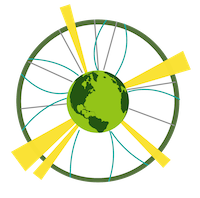Speaker
Description
In recent years, CERN has implemented various strategies to minimize the usage of greenhouse gases (GHG) and prevent their release into the atmosphere. Among these gases, CF₄ plays a not-negligible role, as it is responsible for approximately 20% of the CERN direct GHG emissions. Different strategies have been adopted, such as the research for more environmentally friendly gas mixtures to be used in the detectors and the development of gas recirculation and recuperation systems, which are designed to allow the reuse of exhaust gas. Building on this solid experience, the CH₄ Livestock Emission (CH4rLiE) project aims at developing a prototype for methane emissions capture in a barn environment. In comparison to CO₂, methane has a higher global warming potential (GWP), and human-produced methane emissions account for roughly 23% of global warming. Since a single cow can release roughly 110 kg of methane annually, emissions from livestock farms are not insignificant. Several initiatives have attempted to address the issue by addressing animal feed; CH4rLiE, on the other hand, suggests utilizing a specialized recovery system derived from CMS Cathode Strip Chambers CF₄ recovery systems to address the methane that has already been produced and dispersed in the atmosphere. Therefore, the study of gas adsorption by porous materials and the creation of a methane capture prototype system that will be installed in an actual barn are the main objectives of the project. An initial phase of gas diffusion simulations and a campaign of gas concentration measurements in various barn areas are supporting this study. Additionally, CH4rLiE will offer a chance to investigate, for the first time, the viability of recovering methane from the farm environment without compromising the living or feeding conditions of the animals. The social benefits are particularly intriguing when it comes to creating and executing low-impact farming production methods as well as recycling costly or environmentally harmful gases.

